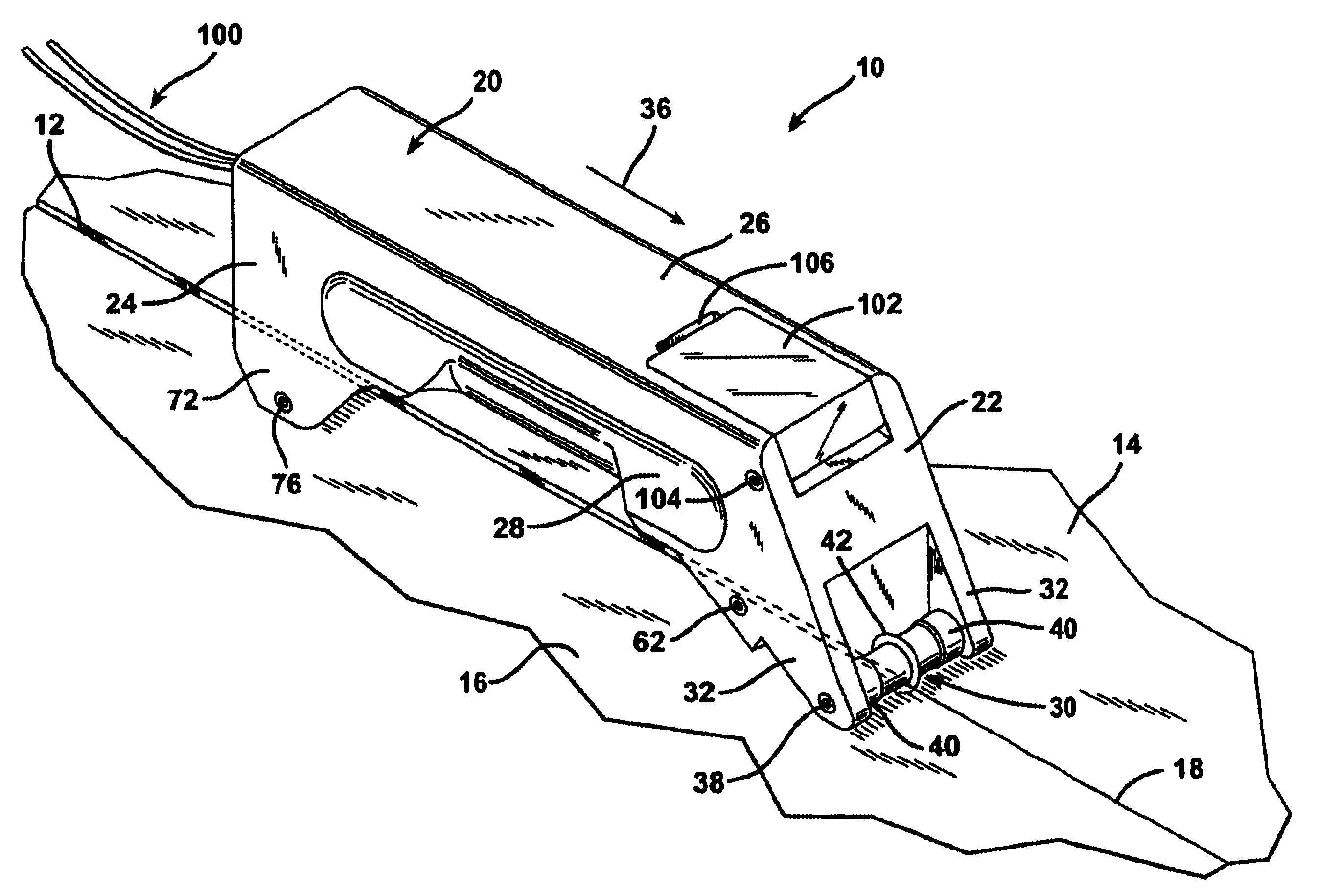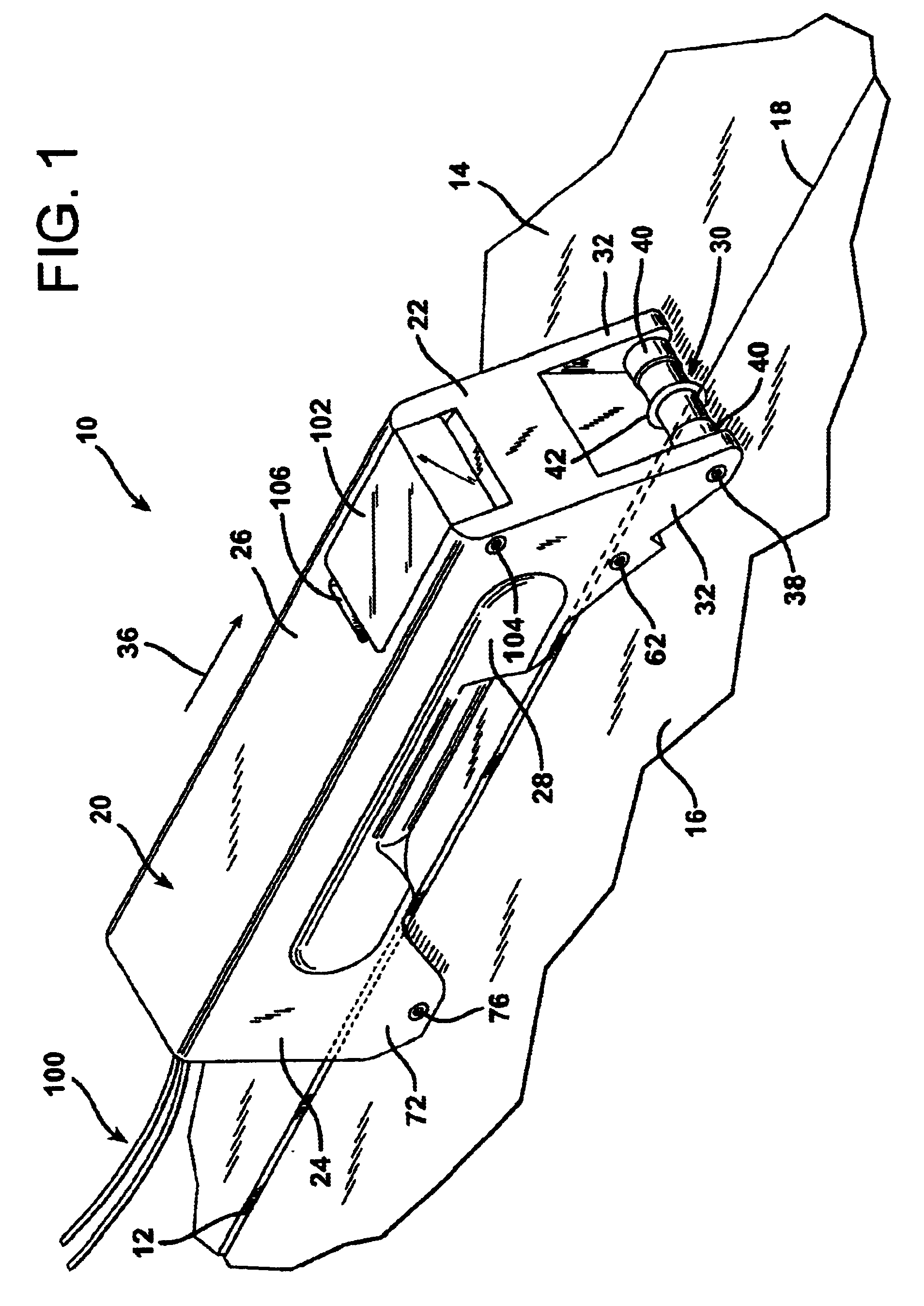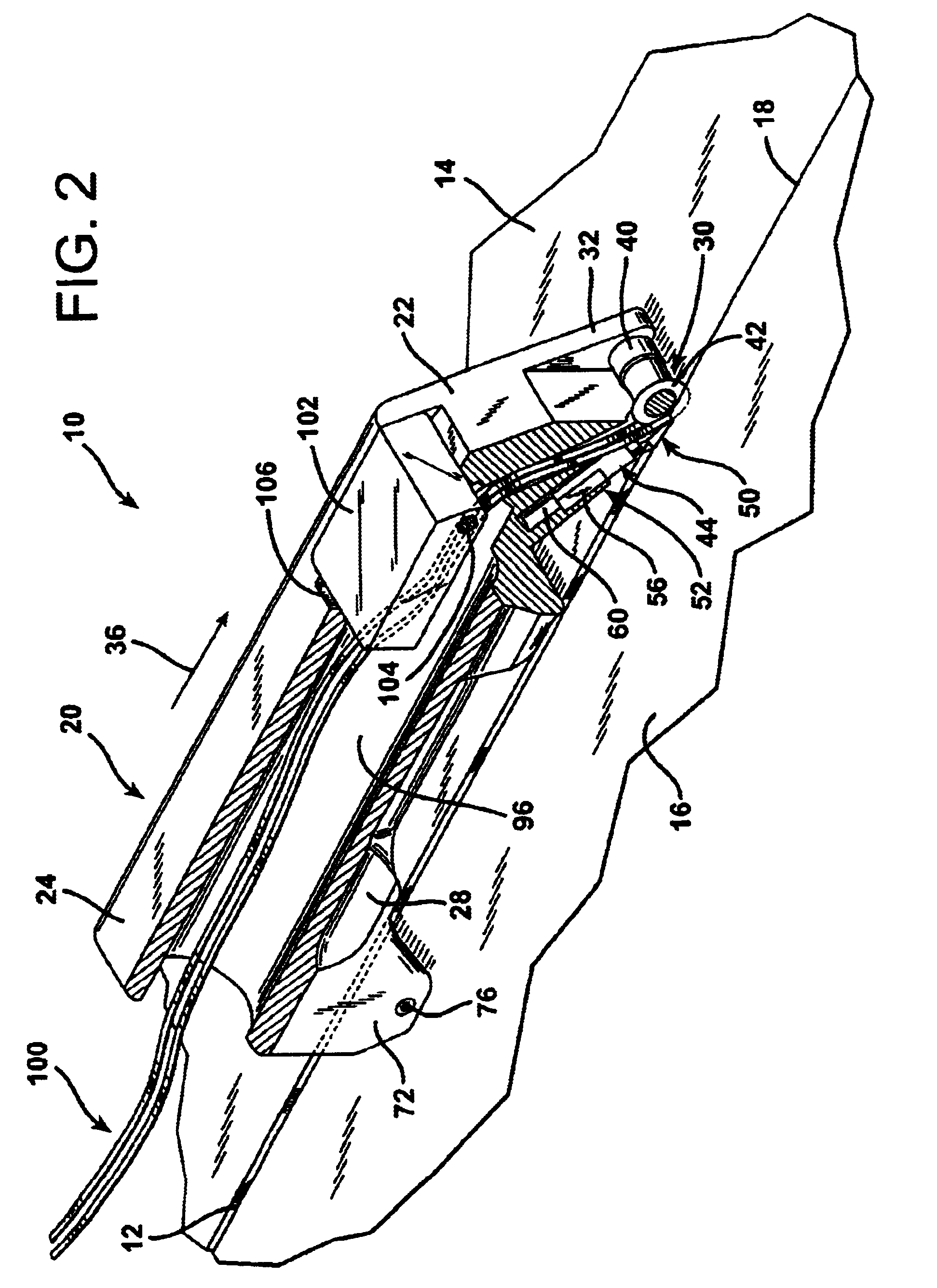Floor groover
a technology of floor groover and groover, which is applied in the direction of other domestic objects, metal working devices, covering/linings, etc., can solve the problems of insufficient adhesive bond between the underside of the floor sheet and the subfloor beneath, and the condition presents both a dangerous condition and an unsightly appearance. , to achieve the effect of uniform cross section
- Summary
- Abstract
- Description
- Claims
- Application Information
AI Technical Summary
Benefits of technology
Problems solved by technology
Method used
Image
Examples
Embodiment Construction
FIGS. 1 through 5 illustrate a manually operated floor grooving tool 10 constructed to create grooves 12 in thin, expansive sheets of flooring which are indicated at 14 and 16. FIGS. 1 through 5 and 8 through 11 show how the floor grooving tool 10 creates grooves 12 at seams 18 between the sheets of flooring 14 and 16, which are disposed with straight linear edges residing in abutting relationship to each other.
The floor grooving tool 10 has an elongated, longitudinally extending body 20 about seventeen centimeters in overall length having opposing front and rear ends indicated at 22 and 24, respectively. An intermediate handgrip portion 26 is formed with a raised undersurface and longitudinally extending, elongated, side depressions 28 that receive the fingertips of the user between the front end 22 and the rear end 24 of the body 20.
As best shown in FIG. 5, the floor grooving tool 10 is provided with a seam-tracking roller 30 mounted to the front end 22 of the body 20 between a pa...
PUM
| Property | Measurement | Unit |
|---|---|---|
| widths | aaaaa | aaaaa |
| distance | aaaaa | aaaaa |
| width | aaaaa | aaaaa |
Abstract
Description
Claims
Application Information
 Login to View More
Login to View More - R&D
- Intellectual Property
- Life Sciences
- Materials
- Tech Scout
- Unparalleled Data Quality
- Higher Quality Content
- 60% Fewer Hallucinations
Browse by: Latest US Patents, China's latest patents, Technical Efficacy Thesaurus, Application Domain, Technology Topic, Popular Technical Reports.
© 2025 PatSnap. All rights reserved.Legal|Privacy policy|Modern Slavery Act Transparency Statement|Sitemap|About US| Contact US: help@patsnap.com



